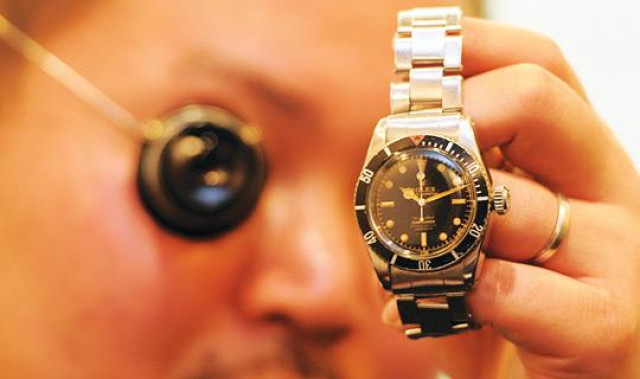6 ways to guard your watch
Follow these guidelines to keep your wrist wear in mint condition for as long as you own it.

6 ways to guard your watch
Clean it

Keeping your watch dirt free on the outside lessens the chance it will collect dust and grime on the inside. Wipe off your watch periodically to remove dust, dirt, moisture and perspiration. This will uphold the look of the watch and contribute to its preservation. For cleaning non-water resistant watches, avoid exposure to any moisture. Take it off during workouts to avoid it coming into contact with sweat. Simply wipe the watch with a dry soft cloth. If you own a water-resistant watch, use a soft damp cloth to clean the head of the watch and then wipe off with a dry soft cloth. Metal bracelets can be cleaned by using mild soapy water and a soft-bristled toothbrush. Anything harsh could leave permanent scratches.
Protect your strap

Exposure to moisture, high humidity, direct intense light, cosmetics, or oily products will cause the strap to deteriorate prematurely, as well as stain or discolour the natural product. Dry your strap immediately with a soft absorbent cloth or clean cotton swabs after exposure to any of these elements; leather especially has a tendency to disintegrate speedily. Avoid direct contact with chemicals such as hair sprays, hair dye, perfumes, greasy food, detergents, and solvents as they may damage the case, gaskets, leather strap and or the chain of your watch.
Beware of moisture

Not all watches are designed to be water-resistant. In addition, even on waterproof pieces, there are various degrees of water-resistance. It is vital to remember that water resistance is not a permanent condition and it must be tested and renewed periodically. Gaskets and seals used to seal the watch depreciate over time and will be in need of replacement. It is recommended that you have your precious time instrument tested at least once every 12 to 18 months for water resistance. However, if there is ever condensation under the crystal or signs of oxidation on the dial, bring your watch to a service centre as soon as possible for adequate repair.
Wind and set it

For mechanical manual (hand-wound) watches, wind it fully at the same time each day. Be careful not to force the crown. When it stops, or you feel resistance, stop winding. Forcing the crown can damage the setting mechanism. To keep mechanical automatic pieces performing optimally, the watch must be worn every day and ‘be active’. To power up an automatic timepiece, give the crown about 20 to 40 turns and put the watch on your wrist. If the watch has a screw-down crown, be sure to secure it after the watch has been wound and set to ensure the water-tight integrity of the watch. If the automatic watch is worn daily, wind it once every two weeks. Wind the watch twice a week if it is not worn daily. For setting the date, it is strongly advised that the date should never be set between 9pm and 3am, as doing so can damage the movement’s gears and pinions. Be sure to adjust the date outside of this time period.
Watch that battery

The average life of say a Quartz watch battery is two to three years. The life of the battery is dependent on a number of factors: age of the timepiece and condition of the movement, and the type of watch—analog/chronograph or digital. The more functions a watch has, the frequency of battery replacement will increase. When a battery can no longer power the watch, have it changed promptly. Otherwise, you run the risk of the battery leaking and causing damage to the other mechanisms of the watch. It is important to have batteries changed only by an expert. You’ll be surprised how many people out there have compromised their watches by attempting to change the battery themselves. Unless you’re a pro, don’t do this.
Avoid risky behaviour

Extreme temperature changes and temperatures above 140 °F and below 32 °F can affect timekeeping and water resistance, and are harmful to most watches. Next time you’re cleaning out your freezer or baking close to an oven, take your watch off. Mechanical watches exposed to anything containing a magnet can also and will cause these watches to run incorrectly. The watch may run fast, slow or even stop. Avoid placing your watch on or near permanent magnets, as found in speakers, and computers. One of the most common culprits is the cell phone. Another watch-killer — sudden shocks or impacts. These may result in possible damage to the case, movement, crystal, dial and hands. When the unfortunate happens, the watch may no longer function as desired and will require service to correct the problem.
Published in The Express Tribune, December 1st, 2014.
Like Life & Style on Facebook, follow @ETLifeandStyle on Twitter for the latest in fashion, gossip and entertainment.



















COMMENTS
Comments are moderated and generally will be posted if they are on-topic and not abusive.
For more information, please see our Comments FAQ